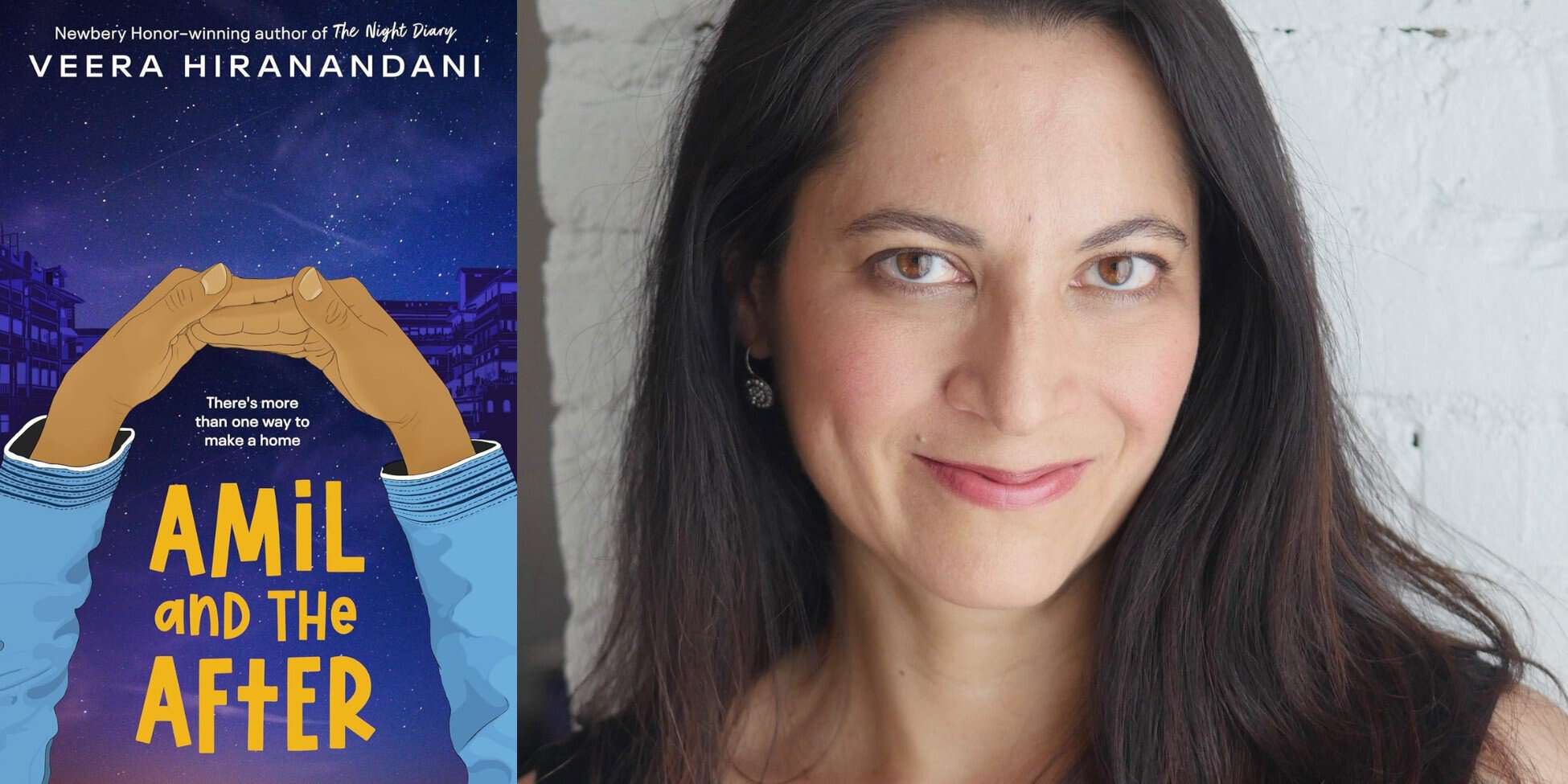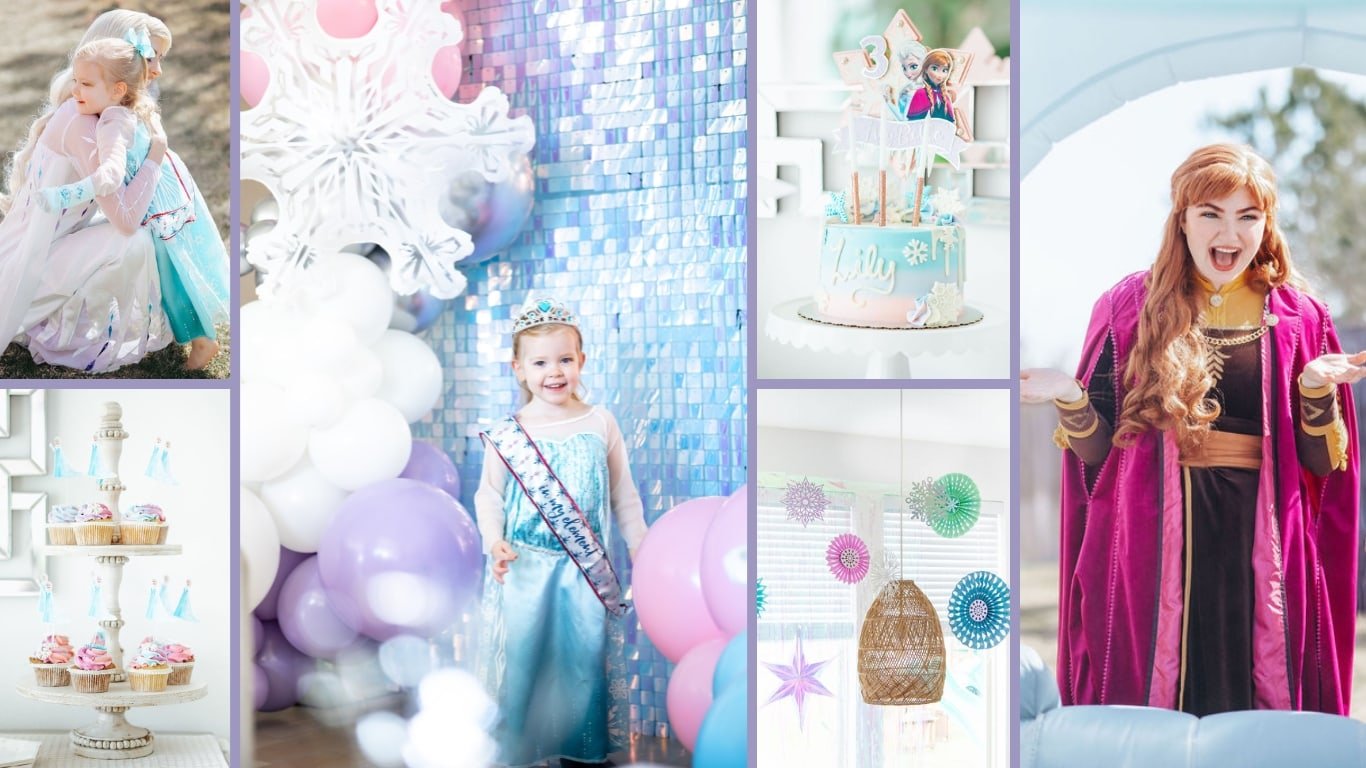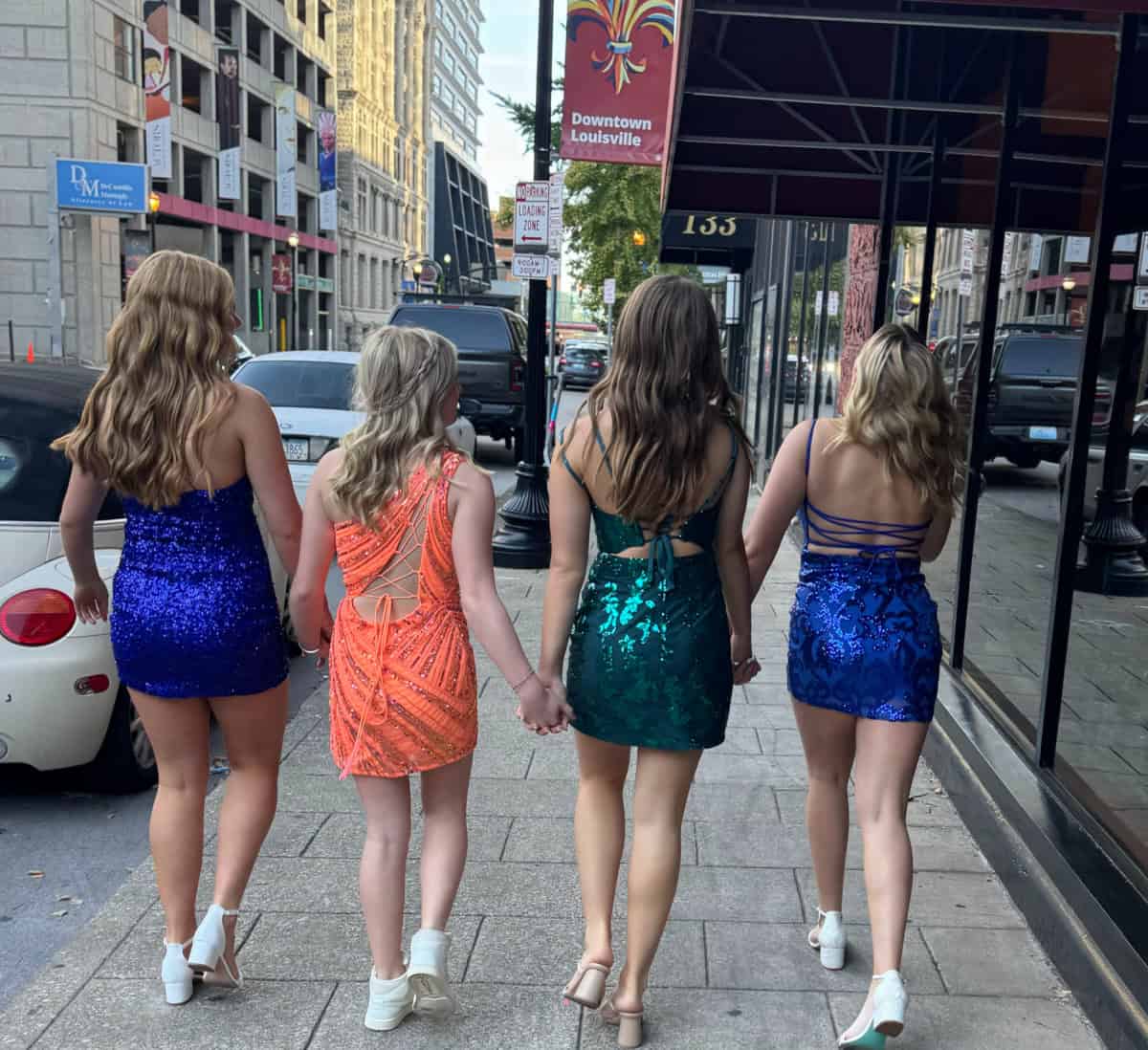Veera Hiranandani is one of my favorite middle grade authors. Her books often include children of mixed faiths and are always about complicated humans, kindness, and culture.
I was so honored to interview Veera by email. I wanted to learn more about how she researches her books and the reasons for writing about the topics she writes about.
You’re going to love our conversation!
Some of her books include these favorites…
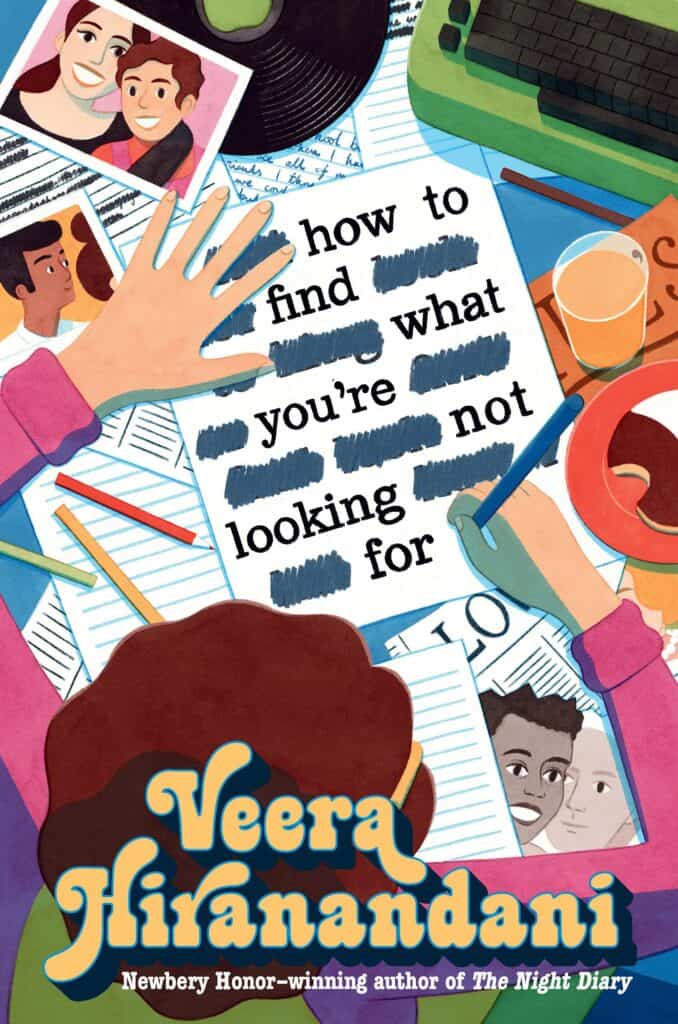
How To Find What You’re Not Looking For is a historical fiction book about a Jewish girl named Ariel whose older sister runs away to marry a Hindu boy.
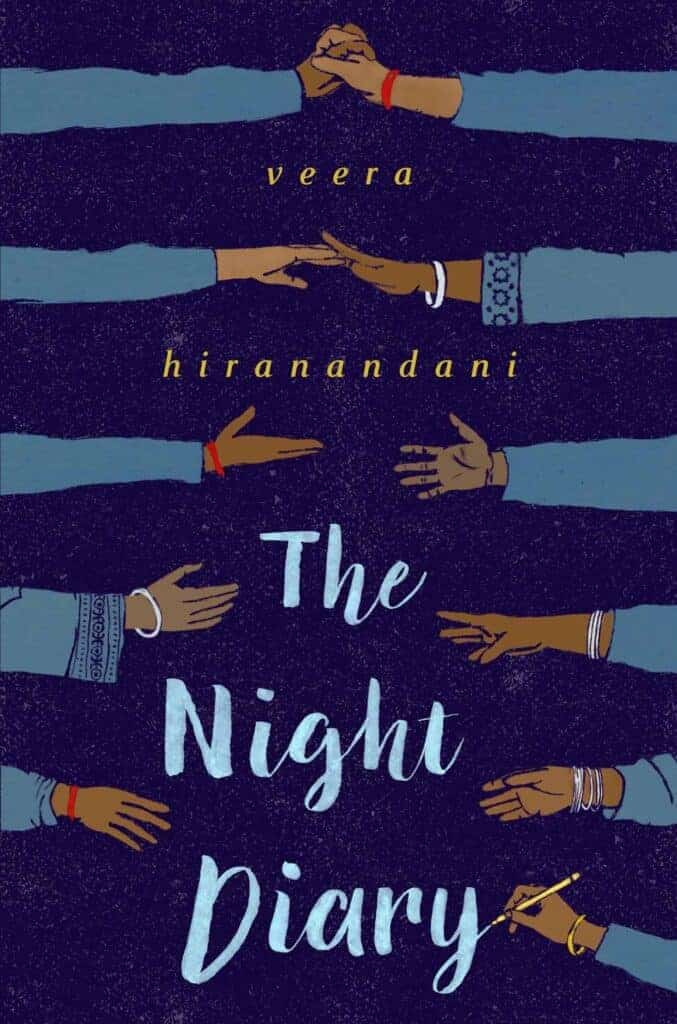
The Night Diary is a middle-grade historical fiction novel about Nisha and her family fleeing south during the Great Partition, the end of British rule that violently divided the country into the Muslim north of Pakistan and the Hindu south of India.
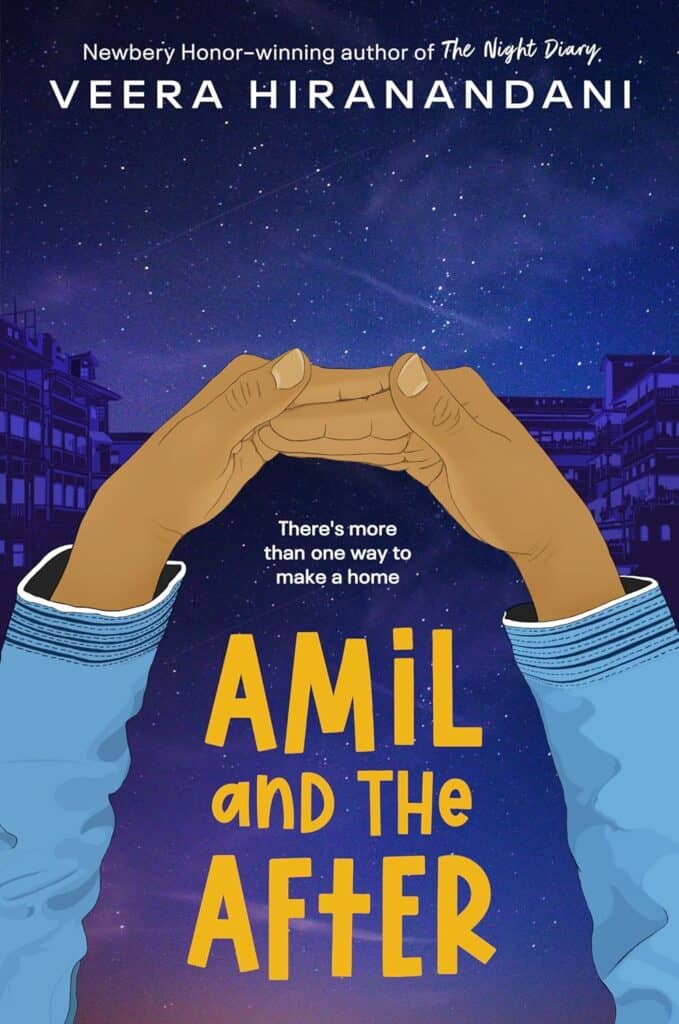
Amil and the After is Veera’s most recent book, the sequel to The Night Diary, which is why I’m including my review of the book in case you missed it.
Amil and the After takes place after The Night Diary as Amil and his twin Nisha adjust to their new home in India. Their dad is stressed about his probationary doctor job, and Amil is struggling at school with an undiagnosed learning disability and PTSD. He loves art, misses the mom he never knew, feels confused about his two religions, and is lonely for friends. Amil trades food with a boy who teaches him art and how to make a flipbook, but he learns the boy is homeless when he’s not in the refugee camp. Amil begs his dad to help the boy and eventually gets help from his uncle. Despite the trauma that Amil’s been through and his daily struggles, his kind heart gives us hope for humanity. I love this story!
Author Interview with Veera Hiranandani
Melissa: You write a lot about children with parents from different faith backgrounds. Can you talk about why this is important to you – and what you hope your readers take away from these children’s stories?
Veera: First, thanks for having me on Imagination Soup! I grew up in an interfaith household (Jewish and Hindu), and I didn’t know anyone who had the same combination in their household and very few people around me who identified as either faith other than my extended family. I often felt marginalized because of that. Though my household was very secular, faith is such a central identity for so many people and communities. I’ve always been interested in how faith identity has played a role in historical conflicts. The Partition of India, which my father’s family experienced, is one example of how people were divided along religious lines. There were many reasons for this–colonization, political power struggles, and personal bias. I try to create characters and stories which examine how this happens and ways we can resist dehumanizing those of another faith, especially during times of conflict. That’s a theme I continued with Amil and The After.
Melissa: Amil and his sister Nisha clearly have been through a trauma which you allude to in several scenes as they experience what might be called panic attacks. What do you hope readers will take away from reading about their experiences in the aftermath of such a traumatic time?
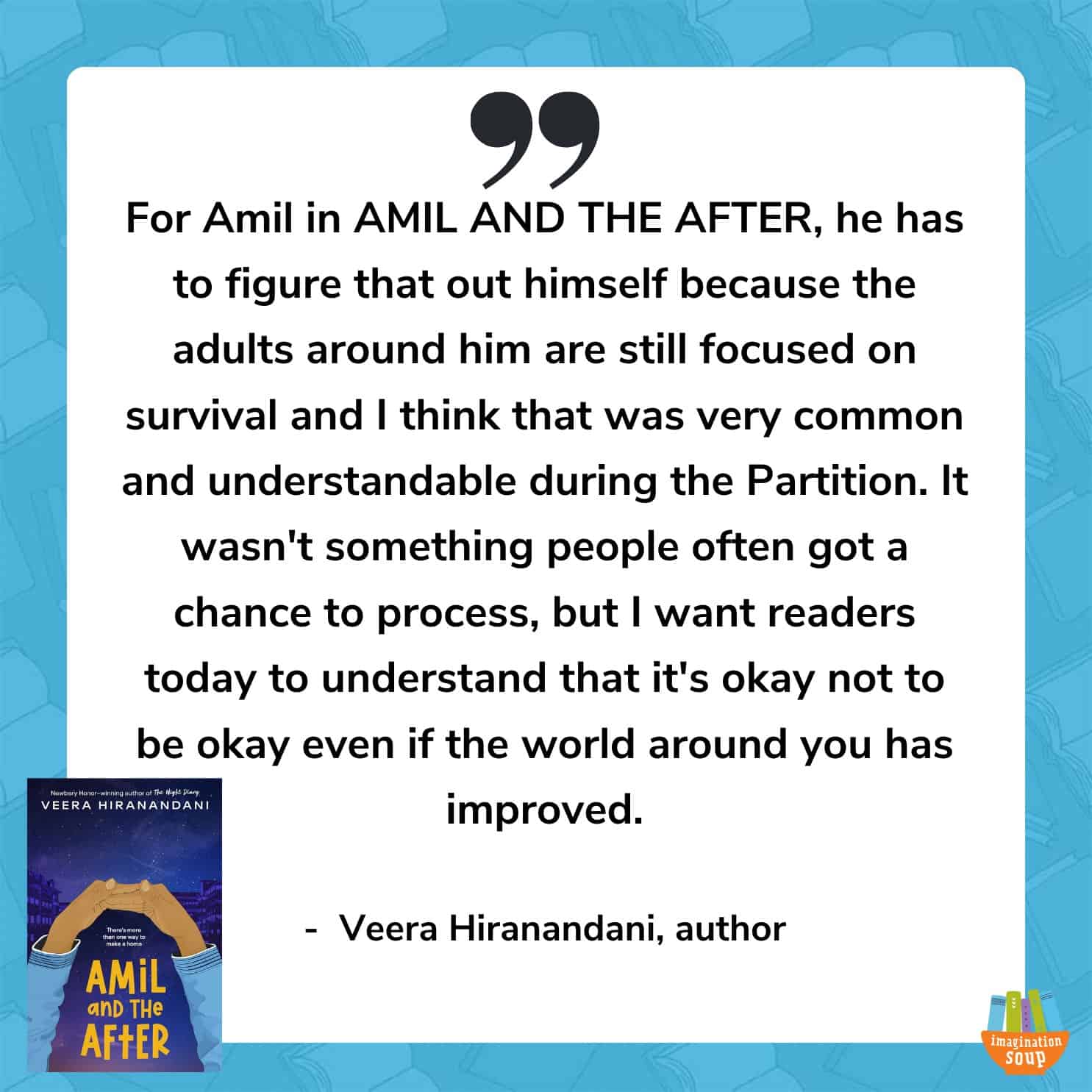
Veera: When families or communities survive something traumatic, I think kids often get a message from adults that returning to “normal” and being as resilient as possible is the goal. But as we know, rebuilding our lives after a traumatic experience, like the pandemic, for example, is not a linear process, and post-traumatic reactions are real and normal. For Amil in Amil and The After, he has to figure that out himself because the adults around him are still focused on survival and I think that was very common and understandable during the Partition. It wasn’t something people often got a chance to process, but I want readers today to understand that it’s okay not to be okay even if the world around you has improved.
Melissa: I love this book’s message of kindness—that it matters even if you can only change the life of one person—and that’s a common thread throughout your books. Is this intentional? Or does it just happen because of your core beliefs?
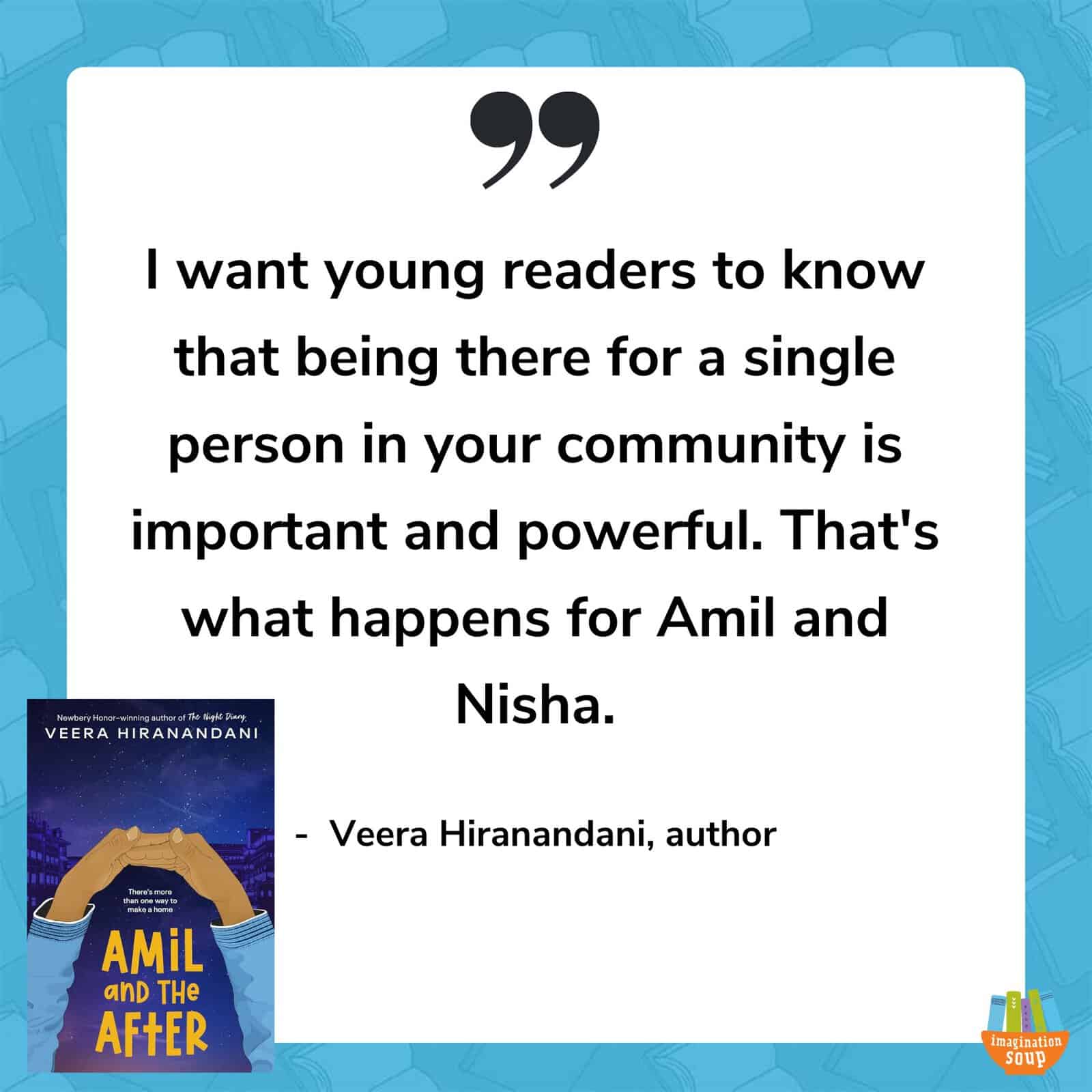
Veera: Thank you. It is intentional and does happen to be one of my core beliefs. I’m my own life, I’m a “prepare for the worst, hope for the best” kind of person. Even when I’m feeling helpless, I try to keep a sense of hope. Partly, it’s because I have that privilege. I have things to feel hopeful about. I’m also a pretty sensitive and empathetic person, so I tend to absorb a lot of the pain in the world that I see on the news. This can feel overwhelming, but I’ve found that being there for someone else in my own community who’s going through an even harder time, makes me feel less helpless. I want young readers to know that being there for a single person in your community is important and powerful. That’s what happens for Amil and Nisha.
Melissa: Can you talk a little about your research process for your historical fiction stories?
Veera: I usually start with interviewing family members or friends since I often write about historical events that I have a personal connection to. Then I start reading non-fiction and fiction about the time period. I try to find collections of oral histories to get a more intimate sense of what it felt like to go through a certain time or event. For both The Night Diary and Amil and The After, resources like The 1947 Partition Archive, and The Partition Museum’s website were helpful. I also watch documentaries. I read newspapers published at the time. I see what was popular in fashion, food, and pop culture. It’s a lot easier with the internet!
Melissa: What is your best advice to growing writers?
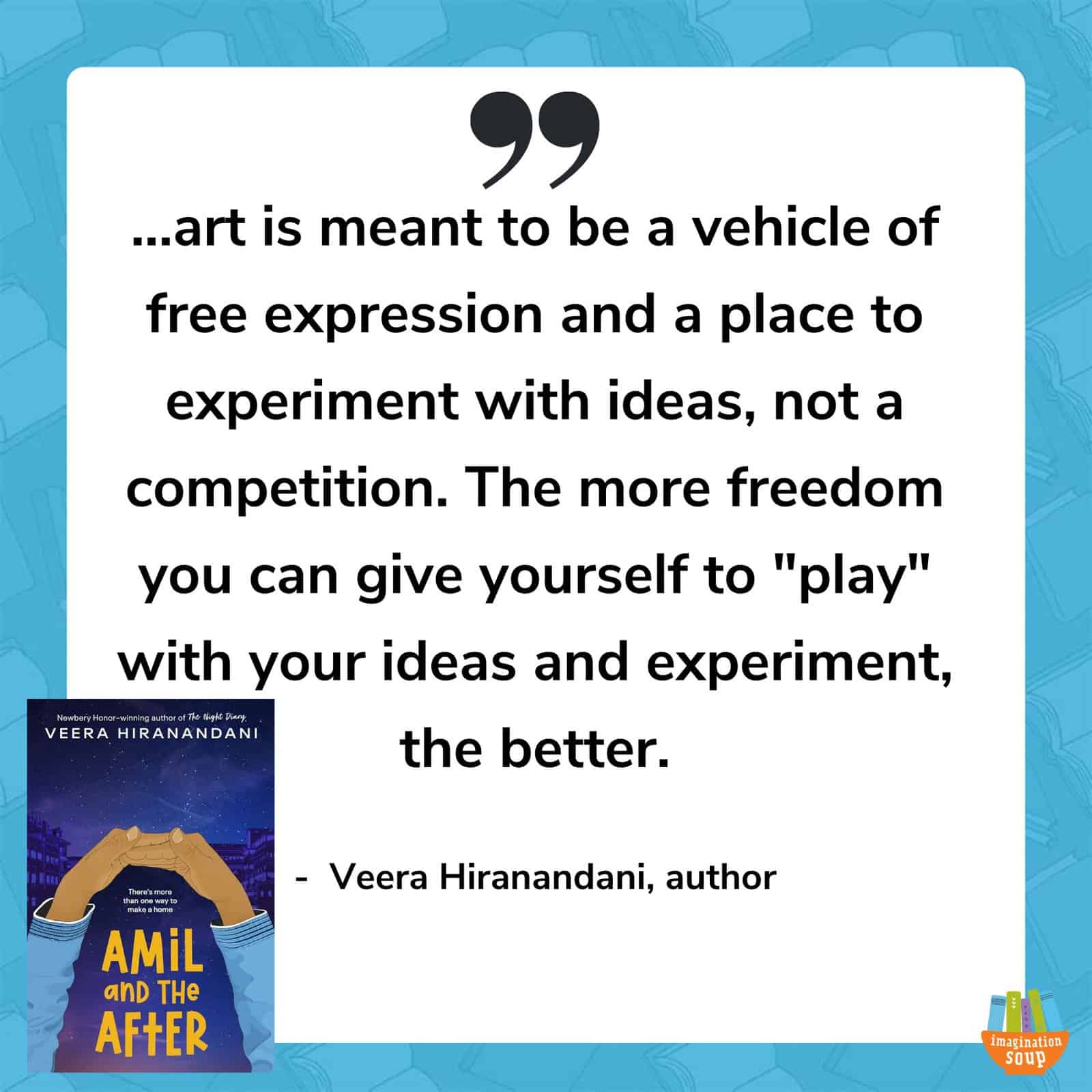
Veera: I would say that if you love to write, that’s a wonderful thing! That means you have a strong inner life and imagination. There’s so much competition out there, but art is meant to be a vehicle of free expression and a place to experiment with ideas, not a competition. The more freedom you can give yourself to “play” with your ideas and experiment, the better. Try not to worry too much if what you’re producing is “good” or not. You’ll have your adult life to do that! I also show in the book how healing and empowering creating art can be–Amil’s drawings and Nisha’s writing.
Melissa: What is your best advice for grown-ups who want to encourage their readers to read more?
Veera: Well, I know as a parent, the more I tell my kids that they should do something, the less they want to do it. It’s probably more about exposure, reading a lot yourself, and giving your kids freedom to choose what’s appealing to them. I used to love comics growing up and my parents never stopped me. There were always books around. I got free choice in the library. I try to do the same for my kids. One is more of a voracious reader than the other and that’s okay. Different people are going to have different relationships with reading.
Thanks again for this interview!
About Veera Hiranandani

Veera Hiranandani, author of the Newbery Honor–winning The Night Diary, earned her MFA in creative writing at Sarah Lawrence College. She is the author of The Whole Story of Half a Girl, a Sydney Taylor Notable Book and a South Asia Book Award finalist, and How to Find What You’re Not Looking For, winner of the Sydney Taylor Book Award and the New York Historical Society Children’s History Book Prize. A former editor at Simon & Schuster, she now teaches in the Writing for Children and Young Adults MFA Program at The Vermont College of Fine Arts.
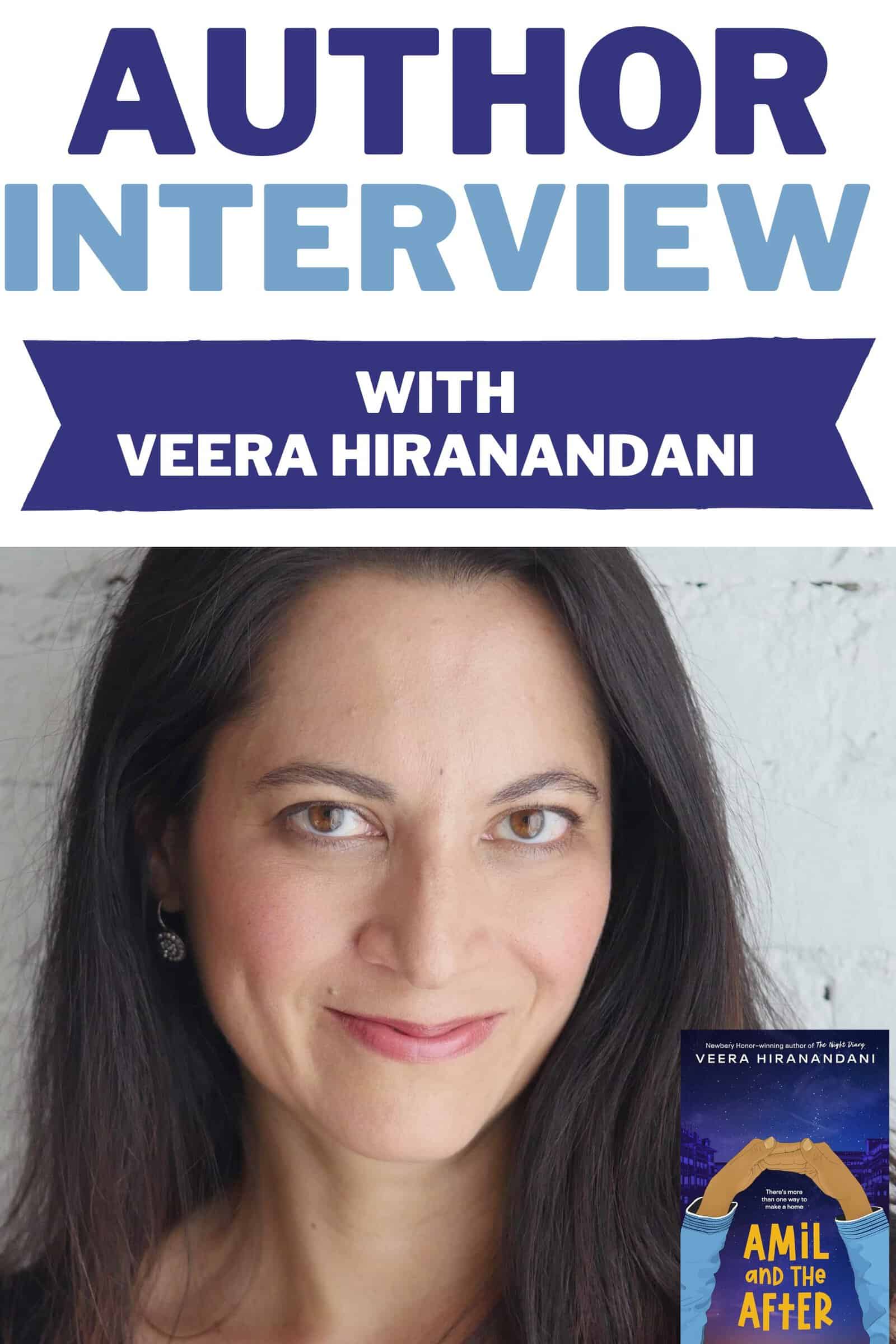
KEEP READING
Author Interview with Barbara Dee
Author Interview with Adam Gidwitz

 PARENTING TIPS
PARENTING TIPS







 PREGNANCY
PREGNANCY








 BABY CARE
BABY CARE








 TODDLERS
TODDLERS








 TEENS
TEENS








 HEALTH CARE
HEALTH CARE







 ACTIVITIES & CRAFTS
ACTIVITIES & CRAFTS








 CONTACT
CONTACT ABOUT
ABOUT